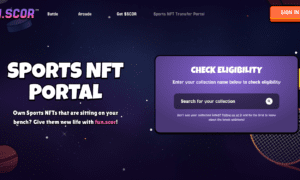The success of a business is often measured by its financial profits. For this reason, companies always seek ways to maximize their revenue.
One strategy that businesses use to achieve sustained profitability is through customer lifetime value (LTV) models. But how does the LTV model work, and what makes it so powerful?
Read on as we dive into the world of LTV models and uncover the secrets to unlocking their potential for long-term business success.
Understanding LTV Models
LTV models are based on a simple concept – the longer a customer stays with your business, the more valuable they become. This is why it’s crucial to retain customers and keep them engaged with your brand.
LTV models use data such as:
- Purchase history
- Frequency of purchases
- Average order value
- Customer demographics
These help to calculate CLTV (customer lifetime value). CLTV means the net profit a customer generates for your business over their lifetime. Understanding this encourages companies to think long-term rather than focusing purely on short-term gains.
For instance, using a CLV calculator, you find out that a customer’s LTV is $600. This means that, on average, that customer will contribute $600 to your business’s profit over their lifetime.
The Power of LTV Models for Long-Term Business Success
The benefits of using LTV models in business are numerous. Here are just a few ways that these models can help drive long-term success:
Predict Future Revenue
LTV models use historical data to predict future revenue. This piece of information is golden because it helps businesses make informed decisions about:
- Marketing budgets
- Sales efforts
- Product development
Identify High-Value Customers
By understanding the lifetime value of customers, companies can identify which ones bring in the most revenue. This information can help them allocate resources toward retaining these valuable customers.
Optimize Marketing Strategies
LTV models can also be used to optimize marketing strategies. By knowing which customers are most valuable, companies can tailor their campaigns and promotions to target those specific demographics. This can lead to higher conversion rates and increased revenue.
Increase Customer Retention
One of the main goals of LTV models is to increase customer retention. By identifying high-value customers and understanding their behaviors, businesses can create targeted retention strategies using tools like this customer retention platform.
This can result in a loyal customer base that continuously generates revenue for the company.
Tips for Implementing LTV Models
To truly unlock the power of LTV models, businesses need to implement them effectively. Here’s how:
Gather Accurate Data
For accurate predictions, it’s essential to have clean and precise data. Make sure to regularly monitor and update your data to ensure its accuracy.
Utilize Advanced Analytics
To fully harness the power of LTV models, companies should consider using advanced analytics tools. For instance, using LTV SaaS solutions can streamline the process of data analysis and help generate actionable insights.
Continuously Monitor and Update LTV Models
LTV models are not a one-time thing. They should be regularly monitored and updated to reflect any changes in customer behavior or market trends. This will ensure that your strategies remain effective and relevant.
Exploring the Potential of the LTV Model
Unlocking the power of LTV models can lead to long-term success for any business, regardless of its size or industry. By understanding the lifetime value of customers, companies can make more informed decisions and tailor their strategies for maximum profitability.
Don’t miss out on this valuable tool for growth – start implementing an LTV model today!
Was this article helpful? If so, check out the rest of our site for more informative content.



































